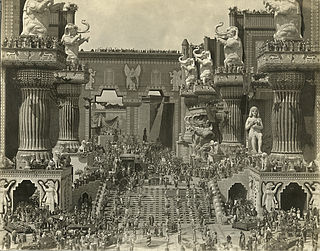I had intended to include D.W. Griffith's Birth of a Nation in this film fest, because it is always mentioned as monumental cinema. But the more I read about the film's heavy violence and racism, it just did not seem in fitting with what I was trying to do this summer. So, we went with Intolerance instead, also a Griffith masterpiece, but more focused on love. The film was inventive for its use of four interwoven tales set in four different time periods, each vignette employing similar story themes.
Specs:
3 hours. Yes, you read that right. This is an epic. Black and white (with color filters employed to distinguish among the 4 vignettes) and silent. We watched it on Netflix.
Our family's average rating (on a scale of 1-10):
5.83
The movie was visually stunning relative to all that had come before. This was so astonishingly better quality a film that there is no question Griffith was a master of his art. His use of close-ups made the experience so vibrant we felt we felt that the actors of 96 years ago were sitting in our living room, and the depth of field was also phenomenal. I found myself obsessively scanning the background to look at details simply because I could -- the details were so sharp. Truly a grand epic on a larger scale than most of what gets made today, this film employed 1000s of extras, massive extraordinary sets and beautifully detailed costumes. (Though families should bear in mind that some of the costumes are pretty racy.)
The movie is worth watching (or I should say starting to watch) for its spectacle value alone and to help appreciate the genius of Griffith who clearly had an impressive vision and the ability to conceptualize how film could be used. But we didn't stand a chance of seeing the whole thing. That would take a special level of interest and commitment from a modern family. My 13 year old was bored after a half hour, while my 10 year old (who has a more natural affinity for silents) enjoyed it almost as much as I did, but even we only lasted about an hour and a half.
Ultimately, we recommend it, but also recognize that successful viewing of silent film drama requires a special interest and the desire to make a leap out of what feels normal and expected.
Iconic shot:

No comments:
Post a Comment